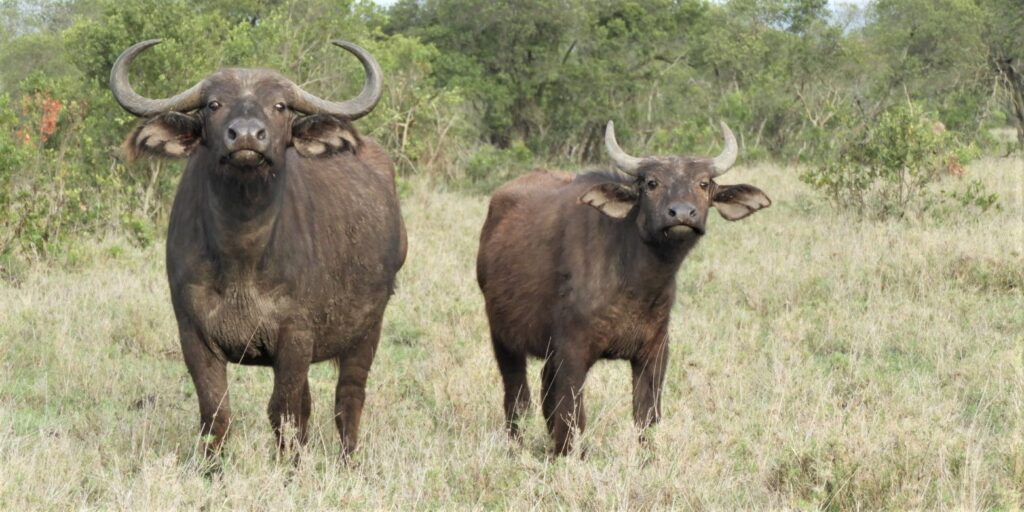» posted on Tuesday, September 13th, 2022 by Linda Lou Burton
Home on the Range
Linda Lou Burton posting from Sweetwaters Serena Camp, Ol Pejeta Conservancy, Nanyuki, Kenya – My first animal spotting was on Otis’s phone. He was holding it at the open window of our vehicle, yelping with excitement. “There’s a buffalo! A buffalo!”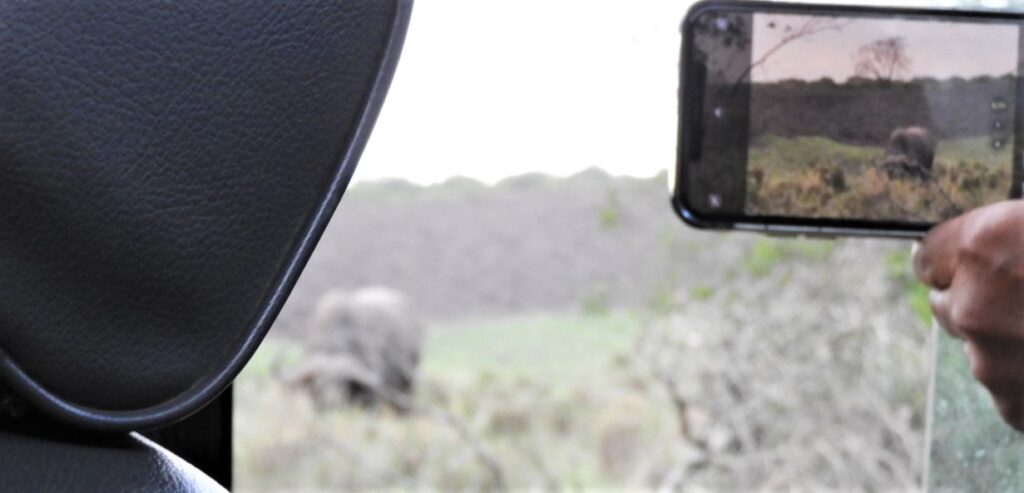
 I yanked my Nikon up to the window, and (watch for it), got a bulls-eye shot. “Ha! He’s looking straight at me!” I said, as Otis and I continued to block the left-side windows. No camera courtesy in our safari behavior just yet.
I yanked my Nikon up to the window, and (watch for it), got a bulls-eye shot. “Ha! He’s looking straight at me!” I said, as Otis and I continued to block the left-side windows. No camera courtesy in our safari behavior just yet.
It didn’t matter, there were plenty of buffalo to go around. We had lucked into a herd, grazing peacefully, raising their heads now and then to give us a curious glance. Abdi and Daniel began tossing out facts; it was Buffalo Lesson time.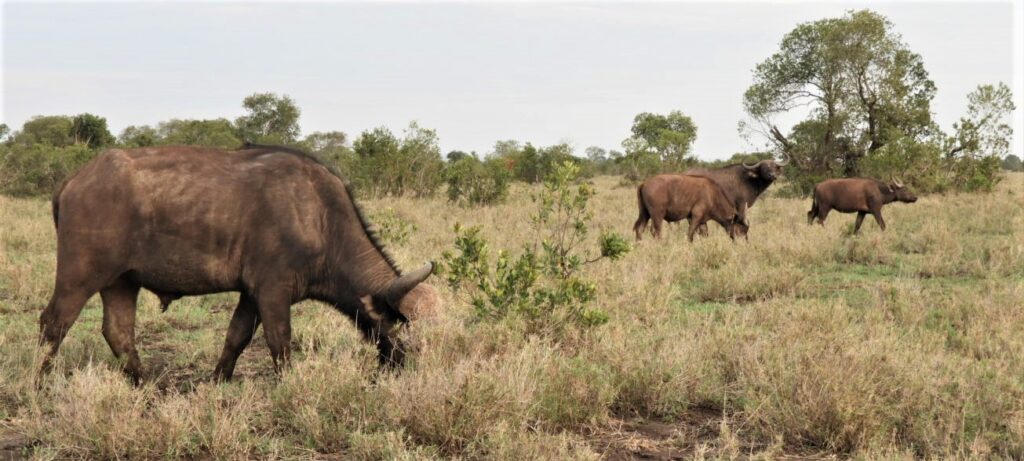
We were looking at the Cape Buffalo. I’d never seen anything like the massive set of horns on the males; that thickness across the top of the head. The bases come very close together to form a shield, referred to as a “boss,” I learned. “See how the horns curve down from there, and then up?” Daniel explained. “Sometimes the horns can reach five feet across.”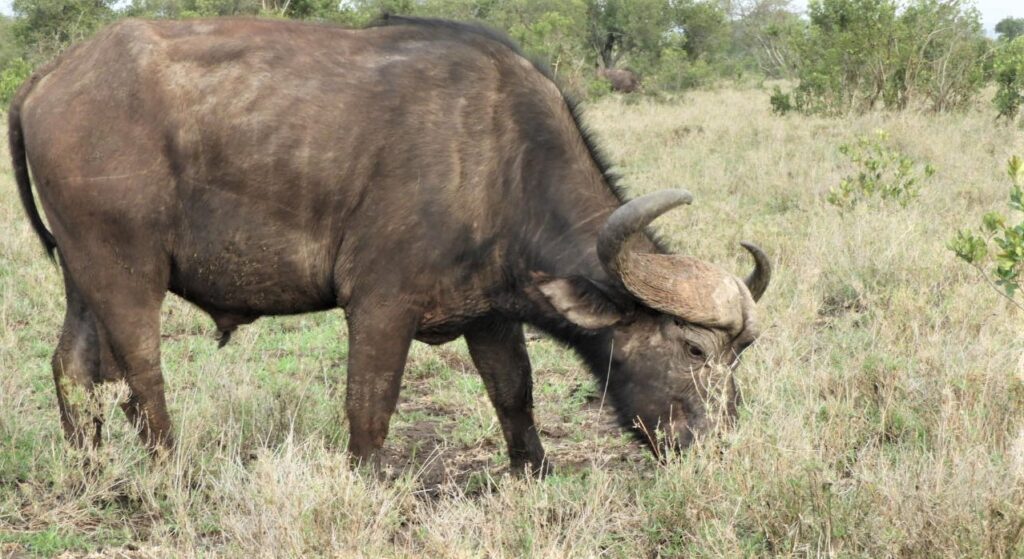
I was aware that the Cape Buffalo is on the “Big 5” list; something created years ago by hunters describing the “5 most dangerous animals to HUNT ON FOOT.” Well yes, I can see that it might be dangerous to be out walking around this big fellow. Males can weigh up to 1,900 pounds, and are strategically savvy in a game of Hide and Seek. Cape Buffalo were considered prized trophies back in the hunting days. (The others on the Big 5 List: elephant, rhinoceros, lion, leopard.) Cape Buffalo are not endangered, but do present conservation challenges due to habitat fragmentation, and conflicts with humans because of their size and aggression; something carefully monitored at Ol Pejeta.
We came up on a mother-child combo next and got a warning stare from Mama. We studied her horns, and the young ones too. Females have smaller, narrower horns, with no “boss” across the top. “Another example of males being more hard-headed than females,” someone quipped. That started us laughing, of course, just as we rounded a curve and spotted two male antelope going at each other, their long spiral horns in combat position.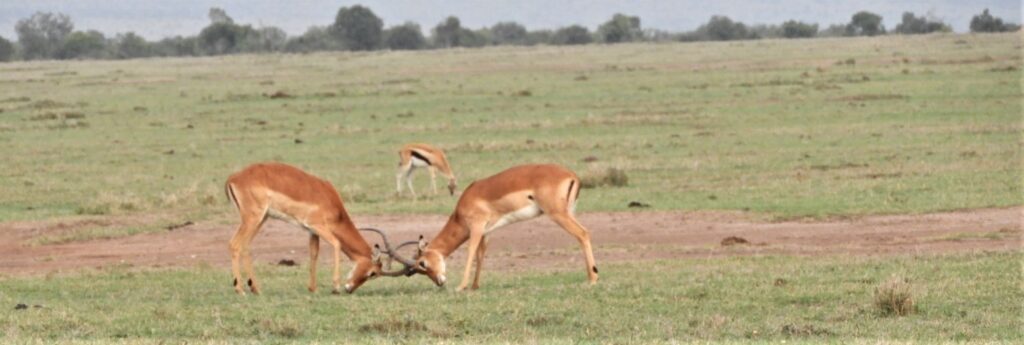
I couldn’t help myself. “Oh give me a home,” I began. Otis took up the cause, “where the buffalo roam,” and next thing you know, Rick and Venita joined in; everyone belting it out.
“And the deer and the antelope play. Where seldom is heard, a discouraging word…..,”
Just then Daniel pulled to a stop at the Rhino Cemetery.

